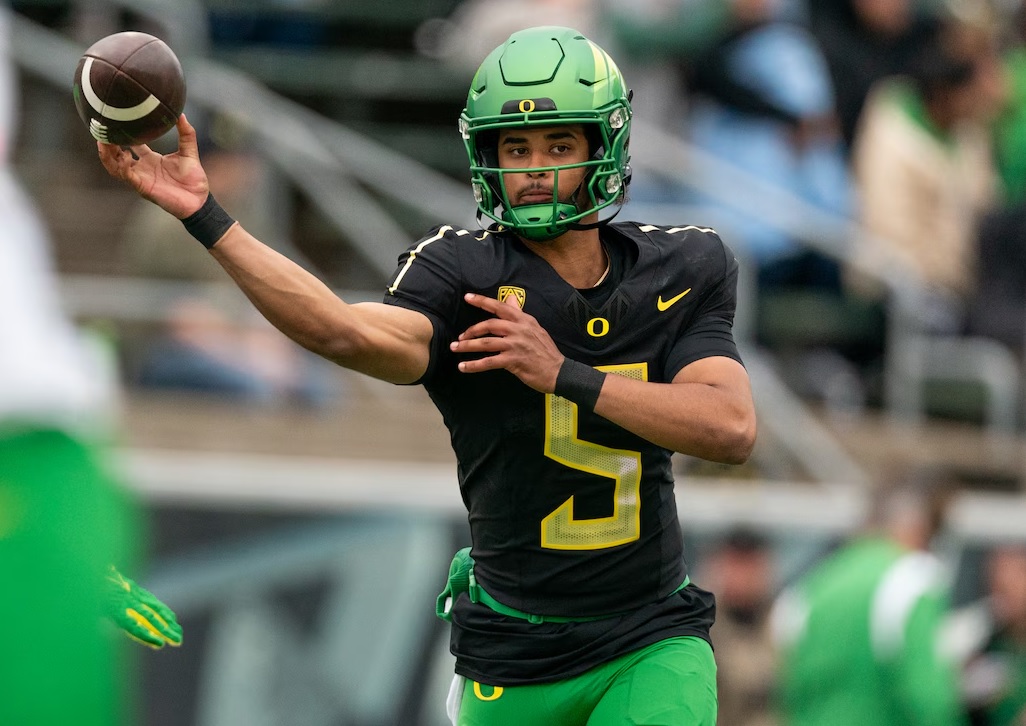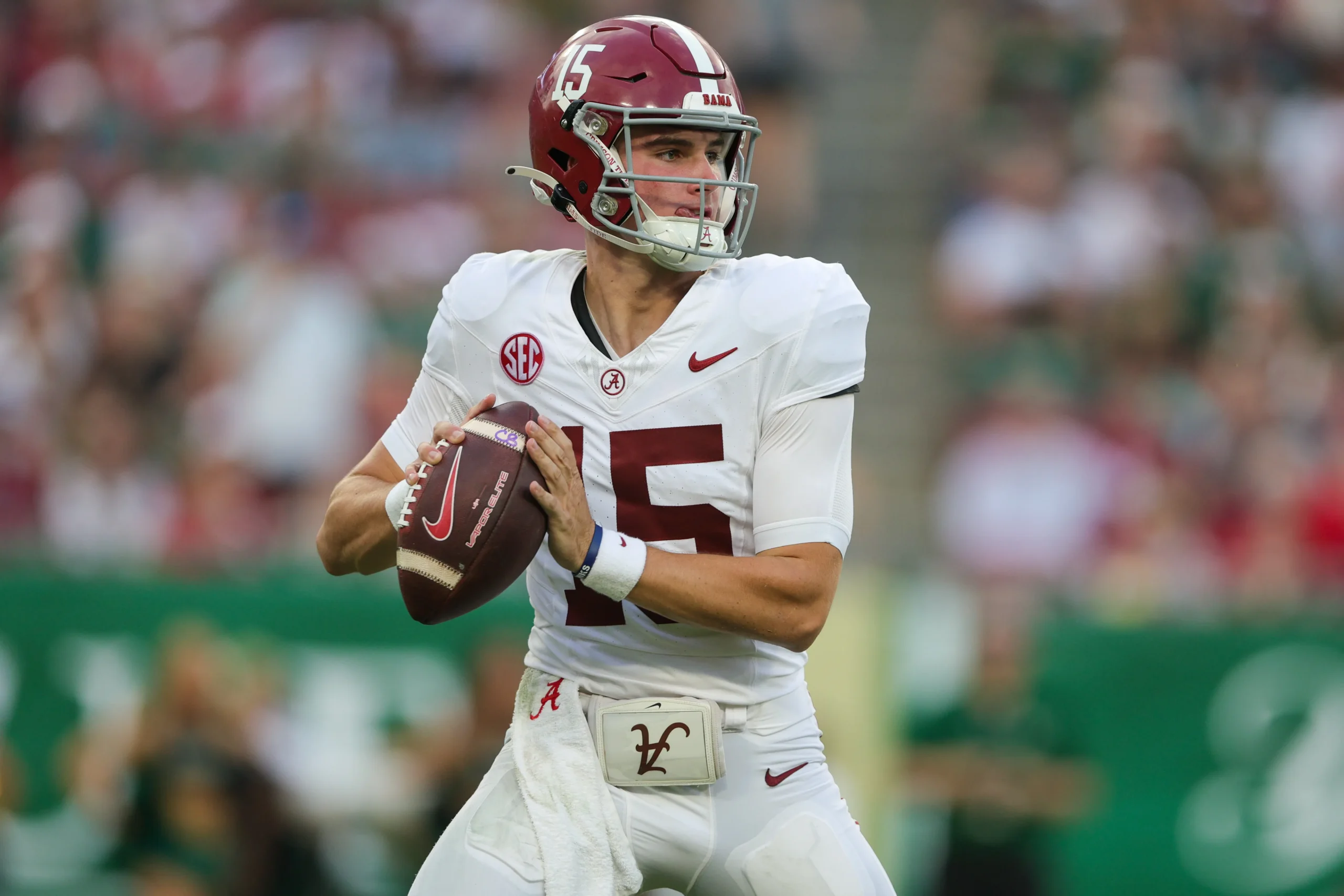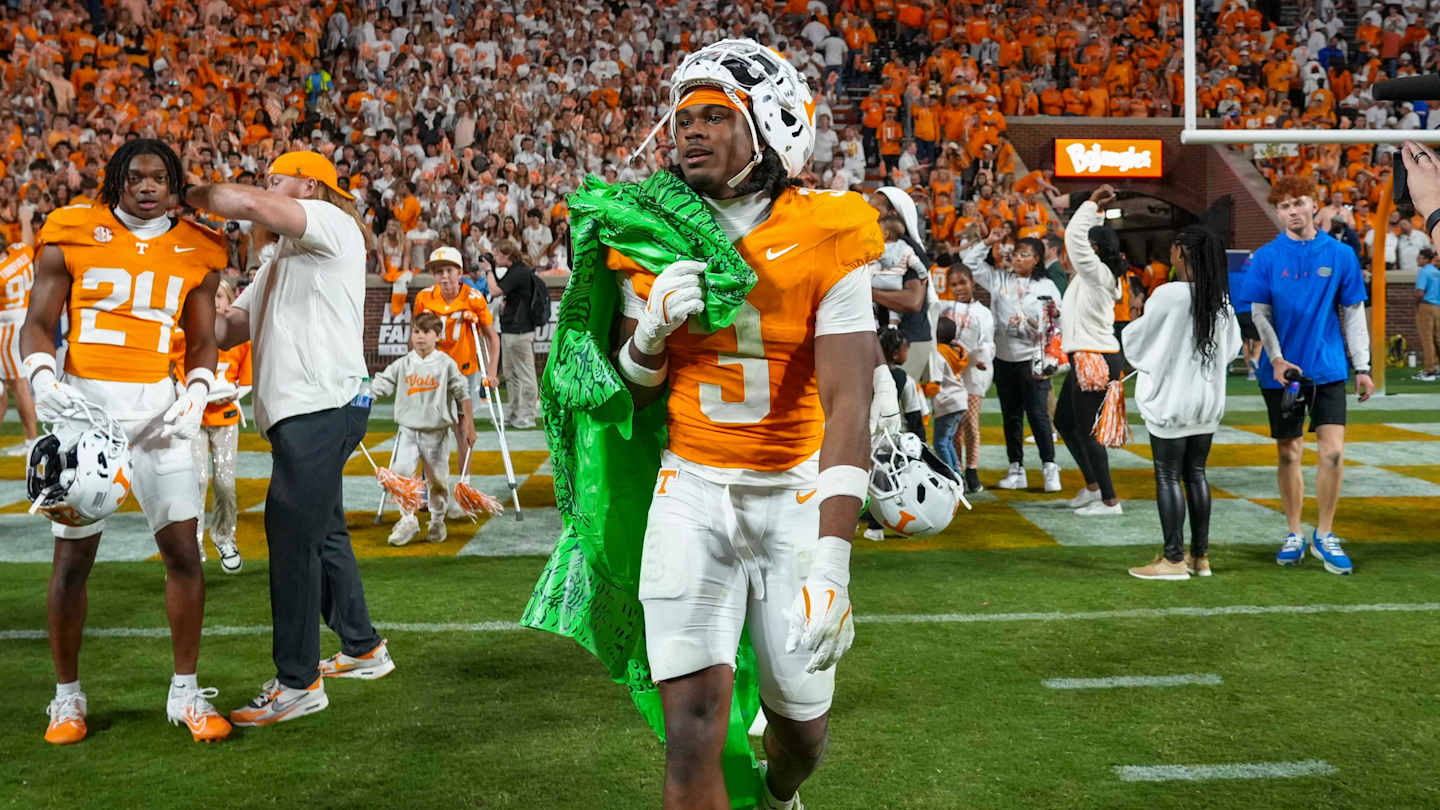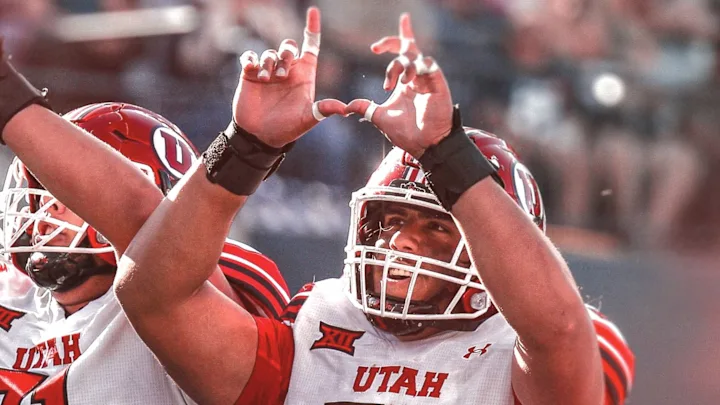By Charlie Campbell.
Send Charlie an e-mail here: [email protected]
Follow Charlie on Twitter @draftcampbell for updates.
This page was last updated April 24, 2021. Follow me @walterfootball for updates.
Position Review: Safeties
Safety Class
Early-round talent: B
Mid-round: B
Late-round: B-
Overall grade: B
2020 prospects vs. 2021
Trevon Moehrig
Xavier McKinney
Kyle Dugger
Jevon Holland
Grant Delpit
Antoine Winfield Jr.
Jeremy Chinn
Andre Cisco
Richie Grant
Paris Ford
Ashtyn Davis
Brandon Jones
Julian Blackmon
Talanoa Hufanga
Caden Sterns
Ar’Darius Washington
Just to be clear this article and series is all my opinion based off my own study and information I’ve gotten from general managers, directors of college scouting, national scouts, area scouts, and NFL coaches who know way more than I do.
Last year was not a strong class of safety talent, with zero being selected in the first round. The 2020 NFL Draft, however, did contain a quality group for Day 2 that extended into the mid-rounds. The 2021 NFL Draft’s class is similar, if slightly more talented.
This year’s top safety, TCU’s Trevon Moehrig, would have been the top safety in the 2020 NFL Draft as well. He could go in the first round this year. Jevon Holland is a comparable prospect to other second-rounders from last year like Antoine Winfield and Kyle Dugger. Andre Cisco would be rated higher if he weren’t coming off a torn ACL. Richie Grant and Paris Ford are better prospects than 2020 third-rounder Ashtyn Davis, but Ford may slide because of massive character concerns. Talanoa Hufanga, Caden Sterns and Ar’Darius Washington are not as good of prospects as Julian Blackmon or Brandon Jones.
Safest Pick: Jevon Holland, Oregon

Previous Picks:
2020: Xavier McKinney
2019: Johnathan Abram
2018: Minkah Fitzpatrick
2017: Malik Hooker
2016: Jalen Ramsey
2015: Landon Collins
2014: HaHa Clinton-Dix
2013: Kenny Vacarro
My track record here is pretty good, as none of these safeties have been true busts, but some of them did not live up to the billing of their draft statuses. This year was a difficult choice, but overall, I feel Holland is going to turn into a good pro. He is a natural free safety whi is fast and instinctive on the backend. Due to his speed and athleticism, Holland also can play slot corner. That versatility projects well to the passing-driven NFL. The only real concern with Holland is being undersized with a thinner frame.
Biggest Bust Potential: Caden Sterns, Texas

Previous Picks:
2020: Ashtyn Davis
2019: Deionte Thompson
2018: Ronnie Harrison
2017: Jabrill Peppers
2016: Darian Thompson
2015: Gerod Holliman
2014: Ed Reynolds
2013: Eric Reid
My track record here is solid. Eric Reid is only the blemish given that he has turned into a decent NFL player. Reynolds, Holliman and Thompson didn’t work out. Peppers has not lived up to being a first-round pick. Harrison, Thompson and Davis have yet to break out, but they still have time and can’t be judged yet.
Sterns came on like gang busters as a freshman at Texas. He looked like he was going to be a star, but his next two seasons were underwhelming. He wasn’t a bad player, but the playmaking ability he flashed as a freshman was severely diminished. There are some projections of Sterns as an early-round pick, but he looks more like a backup-caliber and special teams contributor in the NFL. As an early-rounder, I think Sterns has the potential to disappoint.
Safety Rankings by Attributes
Man Coverage:
NFL prototype: Minkah Fitzpatrick, Steelers
- Jevon Holland
- Paris Ford
- Ar’Darius Washington
- Trevon Moehrig
- Talanoa Hufanga
- Andre Cisco
- Caden Sterns
- Richie Grant
Recap: The NFL is a passing-driven league, and safeties with the ability to play some man coverage are a hot commodity. Many safeties are too stiff to match up against a slot receiver, a tight end or a receiving running back. Offenses seek out those mismatches, so good safeties have some man-coverage ability.
Holland shows the ability to pick them up downfield and blanket them in the deep part of the field. Holland is fast and has the speed to run with wideouts vertically. Along with covering receivers in the deep part of the field, Holland also can play nickel corner and cover man-to-man on slot receivers. With his speed, athleticism and instincts, Holland has the flexibility to play safety and some corner in the NFL.
Ford flashed some man-coverage skills on tight ends and slot receivers in 2020. He does not have good size for covering tight ends all the time, as they could bump him off and box him out to make receptions over him, but Ford has some man-coverage flexibility. He looks like he has the speed and athleticism to play some man on slot receivers, and that is a skill that might need to be developed more at the pro level to match up against NFL receivers.
Washington showed man-coverage ability in 2019, when he did a nice job of running with slot receivers and covering up wideouts in the deep part of the field. With good speed and instincts, Washington did a nice job of preventing separation. He is very undersized for the NFL, however, so receivers making catches over him is going to be problematic, plus he was not as impressive in man coverage in 2020. Hence, he is behind Ford and Holland.
Team sources say they do not think Moehrig is a safety who you would want to play in man coverage on slot receivers or tight ends. Against a team that does not have good players at those positions, a defense could get by some with Moehrig playing man on them, but against dangerous receivers or tight ends, that is not a matchup to put Moehrig in.
Cisco, Sterns, Grant and Hufanga are all safeties who are not man-coverage players for the NFL. Hufanga could play some man coverage on an average tight end, but he lacks the twitch and speed to go man-to-man on a good receiving tight end or a slot receiver. For the NFL, Cisco will need lot of development in man coverage to defend tight ends and slot receivers. Sterns has physical talent, but he needs to develop coverage technique. While Grant is not a man-coverage safety to line up against slot receivers or be a deep free safety, and that was given further proof at the Senior Bowl.
Zone Coverage:
NFL prototype: Tyrann Mathieu, Chiefs
- Jevon Holland
- Trevon Moehrig
- Paris Ford
- Andre Cisco
- Richie Grant
- Ar’Darius Washington
- Caden Sterns
- Talanoa Hufanga
Recap: The ability to play well in zone coverage is a must in the NFL. There are teams that weigh this heavier than others due to scheme. Zone safeties need to be intelligent and cover a lot of ground while playing disciplined and instinctive football. They have to be able to pick up receivers who work through the short and intermediate part of the field. None of these safeties look bad in zone, all doing a good job.
In zone coverage, Holland shows good instincts and quality route-recognition. Holland has nice vision to read the eyes of the quarterback and sees receivers well to pick them up coming into his area. Holland uses his speed, vision and instincts to be a rangy safety in zone coverage who covers a lot of ground in the middle of the field. He has a burst to close on receivers and can eat up space in a blur.
Moehrig can help in coverage in a variety of ways. He has the speed to cover ground, but doesn’t have great range to be a deep centerfielder and single high free safety. He does a nice job of using his vision to play the ball and break up passes while covering wideouts. Moehrig is natural in zone coverage in the middle of the field, doing a nice job on underneath routes and not getting out of position or taking false steps. He is very steady, disciplined, and you don’t see him responsible for busted coverage.
Ford is excellent in zone. He covers a ton of ground and uses his instincts to disrupt passing lanes. Ford does a nice job of breaking up contested catches and closing on open receivers.
Cisco is at his best in zone coverage in the middle of the field when he can keep plays in front of him. He has very good instincts and is fast to read offenses to get in position to make plays on the ball. Cisco closes quickly and is tremendous at jumping routes to break up passes. While Cisco is better in zone than man, he can have issues when his back is turned to the quarterback. Hence, he’s behind the top-three guys. Grant is a good zone-coverage safety in the middle of the field who does a fantastic job of reading a quarterback’s eyes to get in position to create turnovers. With his excellent instincts, Grant seems a step ahead and does a fabulous job of impacting the ball. He shows advance recognition for routes and offenses going to repeat some of the same routes.
Washington is good zone coverage, as he has free safety potential for the NFL. He can play the deep centerfield and cover a lot of ground. With good instincts, speed and athleticism, Washington is an asset in zone coverage.
Sterns is better in zone coverage in the short to intermediate part of the field. He has the speed to cover ground there, but doesn’t have great range to be a deep centerfielder as a free safety. Occasionally at free safety, he can react a hair late to deep passes and/or take a bad angle downfield.
Hufanga is an enforcer in the middle of the field who will punish receivers for crossing the middle. He could contribute as a zone safety in the short to intermediate part of the field, but his change-of-direction limitations and stiffness make him not a great fit to be a deep free safety in zone coverage.
Run Defense:
NFL prototype: Landon Collins, Redskins
- Paris Ford
- Richie Grant
- Talanoa Hufanga
- Trevon Moehrig
- Andre Cisco
- Jevon Holland
- Caden Sterns
- Ar’Darius Washington
Recap: The NFL doesn’t have as large of a need for the big, physical safeties of the ’80s and ’90s who were miniature linebackers. Still, coaches want safeties who are good tacklers and run defenders who are capable of playing in the box. There are a number of solid run defenders in this draft class.
Ford is superb against the run, coming downhill or flying to the perimeter to make tackles. Generally, he does a nice job of getting ball-carriers to the ground, and he shows the ability to take their legs out from underneath them. Ford can be overly aggressive at times, however, and also can look to give a knockout blow rather than wrapping up the ball-carrier.
Grant is a hard hitter who will really get physical, and that leads to him being a good run defender. Grant will come downhill and make tackles on backs with definite ability to be the eighth man in the box. With his strength and physicality, Grant is a reliable tackler who shows a nice technique to get low and wrap up while also delivering some force. He is the only player in this group to have season topping 100 tackles, which he did in 2019 with 108.
Hufanga would have topped 100 tackles in 2020 if it had been a normal season. He was all over the field for USC, recording 62 tackles over six games. Hufanga is a tough run defender who will deliver some hard hits and plays downhill. With his size and strength, Hufanga could contribute as the eighth man in the box and serve as a red-zone/goal-line run defender. He does a nice job of dodging blocks and getting to the ball-carrier when working through trash.
As a run defender, Moehrig is a steady contributor. He uses his instincts to fire to the ball and make plays. Moehrig can break down in space and is a solid tackler. He also shows some strength and explosion to tackle with some physicality. Adding more strength to tackle NFL running backs would not be a bad idea for Moehrig, and growing stronger is something that he will probably do as a result of aging while working out in a pro strength and conditioning program.
Cisco was a solid run defender for Syracuse in 2018 and 2019. He totaled 125 tackles over those two seasons, and he showed the ability to come downhill to make stops in the ground game.
Holland is a willing run defender who uses his speed to come downhill in a blur and make tackles. While Holland is not the biggest of safeties, he does not hesitate to get physical and will deliver some hard hits. He totaled 110 tackles over his two seasons at Oregon and did not shy away from contributing to run defense.
Sterns was as solid run defender for Texas over the past three seasons. He is a decent tackler, but he is not exceptionally physical or aggressive. Washington is undersized for tackling in the NFL, and he was not a big source of stops in the ground game at TCU.
Ball Skills:
NFL prototype: Eddie Jackson, Bears
- Andre Cisco
- Jevon Holland
- Richie Grant
- Paris Ford
- Trevon Moehrig
- Ar’Darius Washington
- Caden Sterns
- Talanoa Hufanga
Recap: The NFL is always on the look out for safeties with a knack for picking off passes. Safeties with the ball skills to catch errant throws or slap passes away from receivers are a great asset. Elite safeties have a knack for creating turnovers.
This year’s class has a few ballhawks, led by Cisco, who has excellent ball skills and very good hands. From the very start of his time at Syracuse, Cisco was one of the most dangerous defensive backs in college football, showing an uncanny ability to produce interceptions. His career total of 13 picks in just over two seasons of playing is a phenomenal total. Cisco is superb at snatching passes away because he has soft hands and is able to make diving catches to produce big plays for his defense. Thanks to his excellent instincts, Cisco is a dangerous threat to create interceptions and throwing his direction is very risky for a quarterback.
Holland has very good ball skills and is a dangerous threat to pick off passes. Over two seasons, he produced nine interceptions and 10 passes broken up with plenty of upside to develop as he gains experience. Like Cisco, Holland is a true ball hawk on the back end.
There is no doubt that Grant has good ball skills and is dangerous to snatch the pass away. Over the last three seasons, he totaled 10 interceptions and 16 passes broken up. Grant plays the ball well and displays rare ball skills for a strong safety. On top of his ability to pick off passes, Grant is a threat to force fumbles because his hard-hitting ability and instincts lead to him creating fumbles for his defense.
Moehrig displayed good ball skills at TCU over the past two years, totaling six interceptions and an excellent 20 passes broken up. He is a dangerous threat to take the ball away and keeps himself in good position to defend the pass.
Washington, Sterns Hufanga have ball skills that are decent, but they aren’t exceptional. Hufanga, however, showed big improvement in 2020.
Tight End Defense:
NFL prototype: Minkah Fitzpatrick, Steelers
- Jevon Holland
- Paris Ford
- Trevon Moehrig
- Andre Cisco
- Richie Grant
- Talanoa Hufanga
- Caden Sterns
- Ar’Darius Washington
Recap: Coaches are looking for safeties who can match up against the dangerous receiving tight ends who have become the rage in the NFL. Starting with the likes of Tony Gonzalez and Antonio Gates, there is currently a pursuit of receiving tight ends. Ron Gronkowski, Jimmy Graham, Greg Olsen and Darren Waller have been so effective that defensive coordinators have to come up with game plans to defend them. Safeties who can cover tight ends are one of the best ways to defend those play-makers.
Holland has enough athleticism to play man coverage on tight ends, and his height and speed make him very attractive for that assignment in the NFL. Holland is thinly framed, however, so he could have issues getting bumped around.
Ford is similar to Holland. In 2020, Ford flashed some man-coverage skills on tight ends and slot receivers. He does not have good size to cover tight ends all the time, as they could bump him off and box him out to make receptions over him, but Ford could run with them and prevent separation.
Team sources say they do not think Moehrig is a safety who you would want to play in man coverage on slot receivers or tight ends. Against a team that does not have good players at those positions, a defense could get by some with Moehrig playing man on them, but against dangerous receivers or tight ends that is not a matchup to put Moehrig in.
Cisco, Grant, Hufanga and Sterns should not play man coverage on tight ends. All of them have some athletic limitations. Washington has size issues that make him misfit to cover tight ends in man.
Tackling & Hitting Ability:
NFL prototype: Derwin James, Chargers
- Richie Grant
- Trevon Moehrig
- Talanoa Hufanga
- Paris Ford
- Andre Cisco
- Jevon Holland
- Caden Sterns
- Ar’Darius Washington
Recap: Even though the NFL is trying to reduce the knockout shots that put some safeties in the Hall of Fame, a safety who is a hard hitter and can separate the ball is loved by coaches. I don’t think it’s a coincidence that tackling is getting worse considering how much players are restricted on hitting. It seems that tackling is getting worse in the NFL. It isn’t hard to see why, as players don’t get to practice tackling very often. Even in the rare padded practice, players very rarely take a ball-carrier to the ground. The NFLPA has restricted contact, and the teams want to avoid injuries. Tackling is becoming a lost art.
There are a few of safeties who can really swat in this class. Grant could be the hardest hitter, and Moehrig is a close second. Hufanga really puts his body into hits and knocks back the ball-carrier or receiver with authority. Grant really stands out as a true enforcer who can deliver some hard blows to ball-carriers.
Ford is a physical hitter, and that was evident the past two years. When Ford arrives at the ball-carrier, he packs a violent punch and looks to punish them. He is undersized for the NFL, however, so it will be interesting to see if his physical style leads to him getting injured.
While Cisco is not the biggest of safeties, he is a willing tackler. He flies downhill and doesn’t show fear to dish out a hard hit or crash into the tackle box. Cisco flashes the ability to get low to take the legs out of the ball-carrier. However, Cisco did have issues with missed tackles at times. Adding some strength to tackle NFL ball-carriers would help him.
Holland is similar to Ford and Cisco. Holland is a willing tackler and does not look to avoid contact. While Holland is not the biggest of safeties, he does not hesitate to get physical and will deliver some hard hits. For the NFL, it would help him to gain some weight and strength to tackle pro backs. That weight could also help him with durability.
Sterns flashed some hitting ability, but he was not consistent as a junior or sophomore. He seemed to turn the physicality on and off at times. Washington being undersized presents tackling limitations as a pro.
NFL Picks - Dec. 22
NFL Power Rankings - Dec. 17
2026 NFL Mock Draft - Dec. 17
Fantasy Football Rankings - Sept. 1




